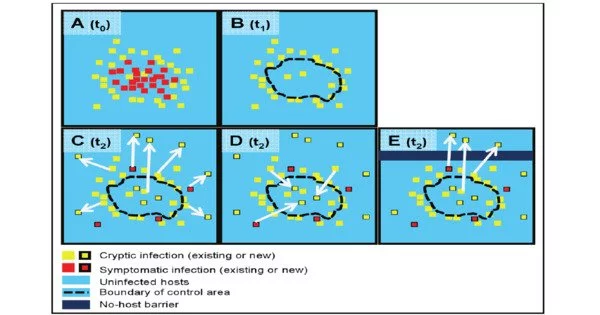Landscape epidemiology has its origins in the subject of landscape ecology. Landscape epidemiology can be used to examine both risk patterns and environmental risk factors, just as landscape ecology is concerned with analyzing both patterns and processes in ecosystems across time and place.
It is a subfield of epidemiology that studies the geographical and environmental factors that influence disease distribution and dissemination in human populations. The assumption behind this discipline is that most vectors, hosts, and infections are generally linked to the landscape because environmental variables govern their distribution and abundance. It acknowledges that the geography and topography of a region, as well as the biological aspects of the environment, can have a substantial impact on disease transmission and emergence.
Natural nidality or focality, as characterized by the premise that microscale disease foci are determined by the overall ecosystem, was established by Evgeniy Pavlovsky in 1966. With the recent availability of new computing technologies such as geographic information systems, remote sensing, statistical methods including spatial statistics, and landscape ecology theories, the concept of landscape epidemiology has been analytically applied to a variety of disease systems such as malaria, hantavirus, Lyme disease, and Chagas’ disease.
Key concepts and components of landscape epidemiology include:
- Geographic Information Systems (GIS): Landscape epidemiology relies heavily on GIS technologies. It enables researchers to map and study disease distribution, vector habitats, and environmental factors that contribute to disease transmission. This data can be used to pinpoint high-risk locations and devise tailored solutions.
- Spatial Analysis: Spatial analysis approaches are utilized to investigate illness patterns and clusters. Analyzing the geographic distribution of cases, determining geographical patterns, and examining the impact of environmental variables on disease occurrence are all part of this process.
- Ecological Factors: Landscape epidemiologists consider the role of ecological factors such as climate, vegetation, land use, and water sources in disease transmission. For example, the presence of certain plants or water bodies may create breeding habitats for disease vectors like mosquitoes.
- Zoonotic Diseases: It is especially important for zoonotic illnesses, which are infections spread from animals to humans. Understanding the relationships between wildlife, domestic animals, and human populations is critical for disease prevention and control.
- Vector-Borne Diseases: It is concerned with diseases spread by vectors such as mosquitoes, ticks, and fleas. Environmental variables influence the distribution and number of vectors, making it critical to analyze the landscape in order to predict and control disease epidemics.
Risk Assessment
Landscape epidemiologists evaluate disease transmission risk by combining data on illness prevalence, vector abundance, environmental conditions, and human behavior. This data assists public health officials in prioritizing interventions and allocating resources effectively. It frequently adopts a One Health approach, which acknowledges the interdependence of human, animal, and environmental health. This comprehensive approach is critical for dealing with complicated diseases that include several hosts and vectors.
Landscape epidemiology has been used to study diseases such as malaria, Lyme disease, West Nile virus, and many others. Public health officials and researchers can design more effective disease prevention, control, and management strategies by understanding how landscape characteristics and environmental factors influence disease dynamics.
















